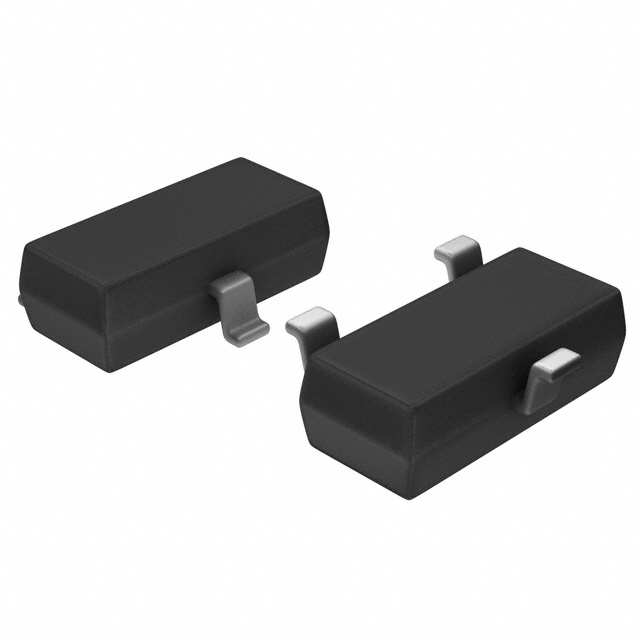BAT54A-G3-18
Product Overview
Category
The BAT54A-G3-18 belongs to the category of Schottky barrier diodes.
Use
It is commonly used in electronic circuits for rectification and signal demodulation.
Characteristics
- Low forward voltage drop
- Fast switching speed
- High current capability
Package
The BAT54A-G3-18 is typically available in a SOT-23 package.
Essence
This diode is essential for efficient signal processing and power management in electronic devices.
Packaging/Quantity
It is usually packaged in reels or tubes, with quantities varying based on manufacturer specifications.
Specifications
- Forward Voltage: 0.32V
- Reverse Voltage: 30V
- Continuous Forward Current: 200mA
- Power Dissipation: 225mW
- Operating Temperature Range: -65°C to 150°C
Detailed Pin Configuration
The BAT54A-G3-18 has three pins: 1. Anode of Diode 1 2. Common Cathode 3. Anode of Diode 2
Functional Features
- High-speed switching
- Low leakage current
- Compact size
Advantages
- Efficient power management
- Small form factor
- Suitable for high-frequency applications
Disadvantages
- Limited reverse voltage tolerance
- Sensitivity to overvoltage conditions
Working Principles
The BAT54A-G3-18 operates based on the Schottky barrier principle, where the metal-semiconductor junction allows for fast switching and low forward voltage drop.
Detailed Application Field Plans
- Signal demodulation in communication devices
- Rectification in power supply circuits
- Overvoltage protection in electronic systems
Detailed and Complete Alternative Models
- BAT54C-G3-18
- BAT54S-G3-18
- BAT54SW-G3-18
In conclusion, the BAT54A-G3-18 Schottky barrier diode offers high-speed switching and efficient power management capabilities, making it suitable for a wide range of electronic applications. While it has limitations in terms of reverse voltage tolerance, its compact size and low forward voltage drop make it a popular choice for modern electronic designs.
[Word count: 298]
Senaraikan 10 soalan dan jawapan biasa yang berkaitan dengan aplikasi BAT54A-G3-18 dalam penyelesaian teknikal
What is the BAT54A-G3-18?
- The BAT54A-G3-18 is a Schottky barrier diode array with common cathode configuration, designed for general purpose applications.
What are the key features of the BAT54A-G3-18?
- The BAT54A-G3-18 features low forward voltage drop, fast switching, and high reverse voltage capability, making it suitable for various technical solutions.
In what applications can the BAT54A-G3-18 be used?
- The BAT54A-G3-18 is commonly used in signal and power management, voltage clamping, and polarity protection circuits.
What is the maximum forward voltage of the BAT54A-G3-18?
- The maximum forward voltage of the BAT54A-G3-18 is typically around 0.32V at a forward current of 100mA.
What is the reverse voltage rating of the BAT54A-G3-18?
- The BAT54A-G3-18 has a reverse voltage rating of 30V, making it suitable for low voltage applications.
Can the BAT54A-G3-18 handle high frequency signals?
- Yes, the BAT54A-G3-18 is capable of handling high frequency signals due to its fast switching characteristics.
Is the BAT54A-G3-18 suitable for use in battery-powered applications?
- Yes, the low forward voltage drop of the BAT54A-G3-18 makes it well-suited for battery-powered applications where efficiency is important.
What is the package type of the BAT54A-G3-18?
- The BAT54A-G3-18 is available in a SOT-23 package, which is compact and widely used in surface mount applications.
Are there any thermal considerations when using the BAT54A-G3-18?
- It is recommended to consider thermal management when using the BAT54A-G3-18 in high current applications to ensure proper performance.
Where can I find detailed specifications and application notes for the BAT54A-G3-18?
- Detailed specifications and application notes for the BAT54A-G3-18 can be found in the product datasheet provided by the manufacturer.


